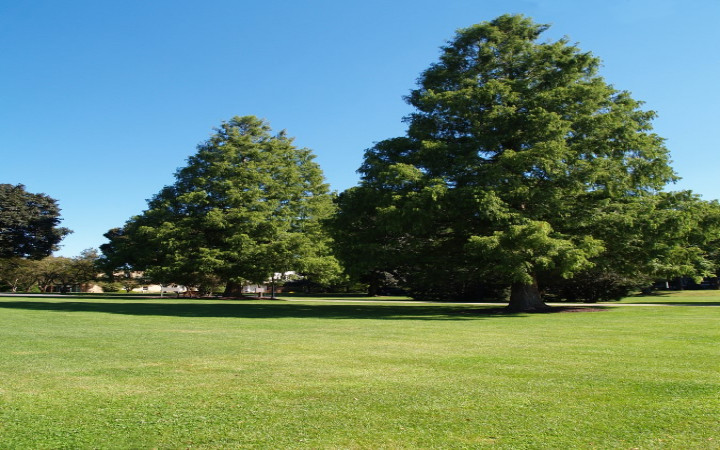In the early days of summer, it can seem like Christmas is a long way away. However, if you get outside to take a hike with your family, you might start thinking about Christmas when you find yourself surrounded by evergreen trees.
When you see certain types of evergreen trees in the wild, such as spruces, pines, and firs, you can't help but imagine them with lights and colorful decorations covering them. From their wide bases that protect all those Christmas presents to their narrow peaks that hold a star or an angel, evergreen trees simply shout "Christmas!" to most people.
If you step back and look at those trees geometrically, you might notice that they resemble a certain three-sided shape. Like all those Christmas trees you've drawn on homemade cards, the wide base and narrow top of many evergreen trees forms a triangle. When you see that triangle from multiple sides on a real tree, you realize it's shaped like a pyramid!
Comparing pyramid-shaped evergreen trees to the many other trees you've seen, you get a sense of how unique they are. So why do some evergreens take such a unique pyramid shape when most other trees don't?
Experts believe the unique pyramid shape of certain evergreen trees is an adaptation that has evolved over thousands and thousands of years. Many of these evergreens, collectively known as conifers, live in places with long, snowy winters.
In these snowy areas, trees with traditional oval or circular tops would have a hard time surviving. The heavy, wet snow would collect in their upper branches and cause them to break off, damaging and possibly killing the tree. Evergreens, on the other hand, have narrow tops that help prevent heavy snow from building up.
Evergreens also tend to have shallow root systems. This makes them susceptible to being damaged by heavy winds. Being shaped like a pyramid, however, reduces their wind resistance, helping them stay upright even in the heaviest winds. Wind resistance is also reduced by the space between layers of branches, as well as the fact that they have thin needles rather than broad leaves.
The particular geography of pyramid-shaped evergreens plays an important role for another reason. The farther north you travel from the equator, the lower the angle is at which the Sun's rays reach Earth. Evergreens rely on sunlight year-round to fuel photosynthesis. Their pyramidal shape allows all their branches to receive more sunlight, since the upper branches don't shade the bottom branches.
Isn't nature WONDERful? The next time you see a pyramid-shaped Christmas tree, you can marvel at how its shape has developed over time as an adaptation to snow, wind, and sunlight!



